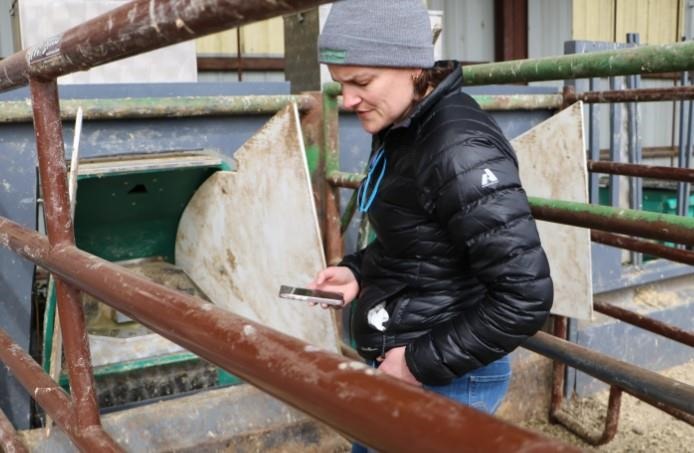By Gary Schnitkey and Nick Paulson
Department of Agricultural and Consumer Economics
University of Illinois
By Carl Zulauf
In early June, retail nitrogen prices in Illinois were $1,116 per ton for anhydrous ammonia, $532 per ton for liquid nitrogen (28%), and $623 per ton for urea. Those prices are down from late fall 2022 but are still well above prices for recent years. Nitrogen fertilizer costs per acre will be near record levels for 2023 on many farms. Fundamental factors suggest nitrogen fertilizer prices will decline into fall 2023. Time will tell if, in fact, these declines happen.
Recent Prices
Retail fertilizer prices for Illinois are regularly reported in the Illinois Production Cost Report, a publication of the USDA’s Agricultural Marketing Service. On June 1, 2023, prices for all three major forms of nitrogen matched their prices at the beginning of the 2023 purchasing season (see Figure 1). Thus, nitrogen prices were lowest at the beginning and end of the 2023 purchasing season.

Some farmers begin purchasing in the late summer of the year prior to planting, with purchases continuing through June or July of the year of production. Timing of nitrogen application (fall or spring), form of nitrogen application (anhydrous ammonia or liquid solutions), and on-farm storage capabilities play a role in a farmers’ timing of fertilizer purchases. In Illinois, many farmers who fall apply can “book” nitrogen at a price contingent on it being applied in the fall. Some farmers have on-farm storage of nitrogen fertilizer, which allows the purchase of nitrogen ahead of use.
On August 25, 2022 — near the beginning of the 2023 purchasing season — ammonia prices were $1,153 per ton. The $1,153 level was down considerably from the highs of over $1,600 in April through June of 2022. From the August 2022 level of $1,152 per ton, ammonia prices increased, reaching levels over $1,400 per ton in October through December. Since late fall highs, price has declined to the current $1,116 level.
AMS also reports liquid nitrogen (28%) and urea prices (see Figure 1), other important nitrogen fertilizer sources. Typically, anhydrous ammonia is the first stage product in the production of nitrogen fertilizer using the Haber-Bosh process, which relies on natural gas as a major input (see farmdoc Daily, February 17, 2021). Further processing of anhydrous ammonia leads to liquid solutions and urea. This joint process results in high correlation among prices of the three main nitrogen fertilizers — anhydrous ammonia, urea, and liquid nitrogen. From 2008 through 2022, the correlation coefficient between anhydrous ammonia and liquid nitrogen prices is .98 and between anhydrous ammonia and urea is .95.
Since further processing is required, the additional production costs often result in higher costs of a per useable pound of nitrogen for liquid nitrogen and urea compared with anhydrous ammonia. A ton of anhydrous ammonia contains 82% nitrogen, or 1,640 pounds (2,000 pounds x .82). A $1,116 per ton price of anhydrous ammonia result is a cost per pound of nitrogen of $.68 per pound ($1,116 / 1,640 pound). Liquid nitrogen contains 28% nitrogen, and a $532 price per ton on June 1, 2023, results in a cost of $.95 per pound ($532 / (2,000 pounds x .28). Liquid nitrogen cost of $.95 pound per nitrogen is higher than anhydrous ammonia of $.68 per pound. Urea is 46% nitrogen. The urea price on June 1, 2023 of $623 per ton gives a cost of $.68 per pound of nitrogen. Anhydrous ammonia and urea have the same cost per pound of nitrogen on June 1, 2023, an unusual event.
Commentary and Outlook
Recent declines in nitrogen prices should be kept in perspective. Current levels of nitrogen prices are still at high levels. Except for 2022 and 2023, anhydrous ammonia prices have rarely been above $1,000 per ton. Before 2021, the last time anhydrous ammonia was above $1,000 was in 2008, during the aftermath of the 2008 financial crisis. From 2009 to 2020, anhydrous ammonia prices averaged $637 per ton, 44% lower than the current $1,116 per ton level.
Some farmers’ per-acre nitrogen costs will be higher in 2023 than in 2022. In fall 2021, farmers could have booked nitrogen near $800 per ton, well below prices later in 2021 and through 2022. Sub-$1,000 prices did not exist during the fertilizer pricing window for2023 production.
Attention will soon turn toward input purchases for 2024 production. Farmers will again have opportunities to purchase nitrogen this fall. Fundamental factors suggest an easing in nitrogen fertilizer prices. Nitrogen prices are highly correlated with corn prices and natural gas prices (see farmdoc daily, June 14, 2016 and December 14, 2021). Nitrogen prices fall with declining corn prices. Current fall bids suggest declining corn prices; however, growing conditions this year will heavily impact corn prices. Falling natural gas prices are typically also associated with falling nitrogen fertilizer prices. Natural gas has declined from above-average price levels late last year to below-average price levels in late spring 2023. Time will tell if fertilizer prices continue to decrease.
Source : illinois.edu